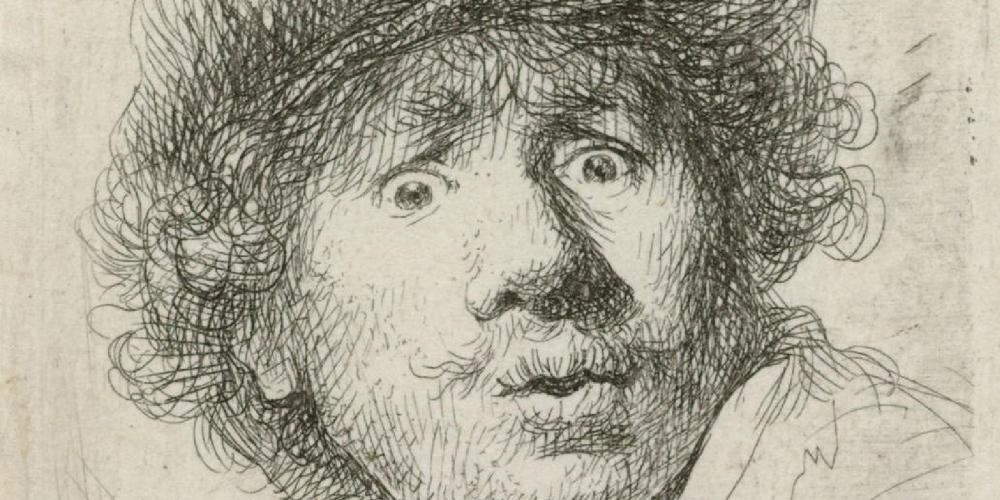
VUB researchers study artist’s financial management
The art, the person and the life of Rembrandt continue to fascinate. This is clear too from the stream of literature on his financial management. Dave De ruysscher and Marco in ’t Veld, both affiliated with the VUB-CORE research group, VUB’s Department of Interdisciplinary Legal Studies and Tilburg University, specialise in early modern commercial law and have been able to clarify a number of important questions about Rembrandt’s insolvency.
De ruysscher: “Rembrandt was a clever entrepreneur with an eye for the legal fray. But he was no mastermind. His behaviour therefore resembles that of many debtors in trouble: trying to appease the creditors and, in extreme circumstances, throwing in the towel. There can therefore be no question of a conspiracy theory, as is claimed in other literature.”
Rembrandt ran into financial difficulties during his lifetime. On 14 June 1656, he applied to the Supreme Court for insolvency. According to Machiel Bosman, whose notorious book Rembrandt’s Plan was published in 2019, this application was part of a premeditated plan to preserve his monumental house – today the Rembrandt House museum in Amsterdam – for Hendrickje, the woman with whom he was living at the time, his son Titus, and his daughter Cornelia. Nevertheless, this house was sold and a large part of the proceeds ended up with Rembrandt’s powerful creditor Cornelis Witsen. Titus and another creditor litigated over the remainder for years. Rembrandt himself moved to a modest rented house where he continued his painting work in the employ of a company set up by Hendrickje and Titus.
No preconceived plan
This thesis by Bosmans was recently criticised by Bob Wessels in his book Rembrandt’s Money. Wessels’ criticism is largely based on the research of De ruysscher and in ’t Veld, who have combined a thorough analysis of the archive material on Rembrandt with their knowledge of Amsterdam law.
In ’t Veld: “A premeditated insolvency of the estate is highly improbable. The proposition finds no support in the sources and can therefore not be put forward as an explanation. It is much more likely that he used the surrender of the estate to settle his debts without too much damage to his reputation. This happened much more often in Amsterdam. Rembrandt did have a tendency to push the legal limits.”
The grey zone
De ruysscher and In ’t Veld demonstrate this by examining two other issues. They looked at how things stood legally with Rembrandt’s house. When Rembrandt’s wife, Saskia van Uylenburgh, drew up her second will on 5 June 1642, two weeks before she died, it stipulated that her half of the matrimonial property was to pass to her son Titus, on condition that Rembrandt remained in full possession of and had the right to use the property until he remarried or died.
A few years earlier, Rembrandt had bought the house with Saskia for 13,000 guilders. The payment was to be made in instalments and at the time of Saskia’s death, the house had not been fully paid for. When the payment was delayed, an unclear situation arose. De ruysscher and In ’t Veld have been able to prove that Rembrandt was the owner of the house, but that this ownership had only taken effect after a judicial delivery against third parties on 8 January 1653. That removed the possibility for Rembrandt to delay payment any further. He hastily took out a number of loans to be able to make this payment.
In ’t Veld adds: “The legal situation of the house is important for the later settlement of the estate. In the literature, it is sometimes claimed that Rembrandt became the full owner of the house and then tried to secure the house for his son Titus. In reality, Rembrandt only became half owner and had usufruct over the other half, which according to the will belongs to Titus.”
In the years that followed, Rembrandt’s financial position deteriorated even further. It was in this context that, on 17 May 1656 – exactly four weeks before his request for relinquishment of the estate – Rembrandt “assigned” the house to his then 14-year-old son. Until the publication by De ruysscher and In ’t Veld, it was assumed this meant Rembrandt was trying to transfer his share of the house to Titus to safeguard it from creditors.
De ruysscher: “This is not correct, however. Such a transfer of ownership would have been reversed by the creditors after the surrender of the estate. The assignment was not a transfer of ownership and could not have resulted in the discharge of the debt. Comparison with other archival material shows that it was rather a registered promise by Rembrandt that he would guarantee his debt to Titus with his share of the house. This was useful for Titus because the collateral now consisted of a larger proportion of real estate.”
In this way, the researchers were able to clearly demonstrate that no conspiracy theory is required to explain Rembrandt’s insolvency.
In ’t Veld: “The conspiracy theory does not explain how Rembrandt could have been so clever as to set up a legally complicated surviving relatives’ arrangement but, on the other hand, could not have foreseen that the plan would fall apart. Rembrandt lost the guardianship of his son and thus control over his actions. A new guardian, Louis Crayers, claimed the house in settlement of Titus’s debt. The house was sold at public auction.”
De ruysscher is the promoter of In ’t Veld. In ’t Veld published his findings under his own name in Pro Memorie. Later, a more detailed English-language publication by both of them appeared in the art-historical journal Oud Holland.